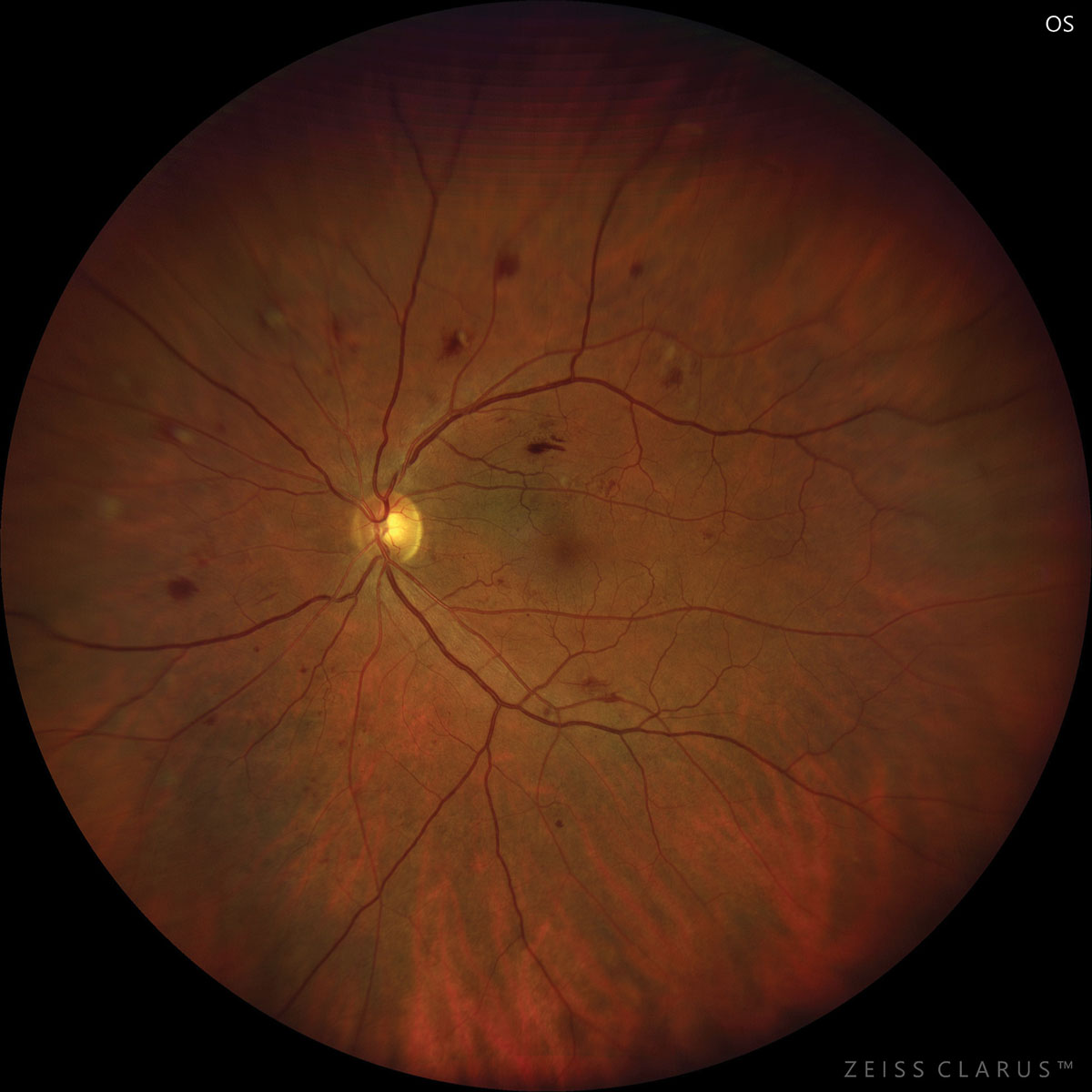 |
| A low estimated glucose disposal rate was associated with greater risk of retinopathy and kidney disease in a large cohort of young individuals. Photo: Julie Torbit, OD. Click image to enlarge. |
Estimated glucose disposal rate (eGDR), which is derived from clinical measures such as HbA1c, hypertension, waist circumference and BMI, has been proposed as an alternative to the current gold standard for measuring insulin resistance in type 1 diabetes (an invasive approach called the euglycemic hyperinsulinemic clamp technique). There are a number of studies linking insulin resistance to microvascular complications. Researchers investigated whether eGDR was associated with increased risk of retinopathy and kidney disease (i.e., micro- or macroalbuminuria) in young people with type 1 diabetes. Through a nationwide observational study, they found an association.
The researchers used data from the Swedish pediatric registry for diabetes and the registry for adults, amassing a cohort of 22,146 individuals with type 1 diabetes (10,289 with retinopathy and 11,857 with kidney disease; median age 21; 42% female). The researchers reported significant retinopathy and kidney disease events over a 4.8-year follow-up period (Table 1).
After adjusting for covariates, the researchers found that individuals with a lower eGDR had an increased risk of retinopathy compared with those whose eGDR was ≥8mg/kg/min. Similar findings were noted among those with kidney disease.
Based on the findings in this cohort, the researchers concluded that “young people with type 1 diabetes with low eGDR have higher risk of developing both retinopathy and kidney disease, which indicates that insulin resistance increases the risk of these complications. Since microvascular complications are predictors for cardiovascular disease, and earlier observation demonstrates the association between eGDR and cardiovascular death and mortality, in individuals with type 1 diabetes, further studies are much needed to explore insulin resistance as a risk factor for micro- and macrovascular complications in people with type 1 diabetes.”
Table 1. Retinopathy and Kidney Events During Follow-up
| eGDR (mg/kg/min) | |||
≥8 | 7.99 to 6 | 5.99 to 4 | <4 | |
Retinopathy events | 5,040 (24.7%) | 1,909 (48.1%) | 504 (52.3%) | 179 (57.6%) |
Kidney events | 1,321 (6.5%) | 526 (13.3%) | 255 (26.8%) | 145 (46.6%) |
Linn W, Persson M, Rathsman B, et al. Estimated glucose disposal rate is associated with retinopathy and kidney disease in young people with type 1 diabetes: a nationwide observational study. Cardiovasc Diabetol. March 19, 2023. [Epub ahead of print]. |


